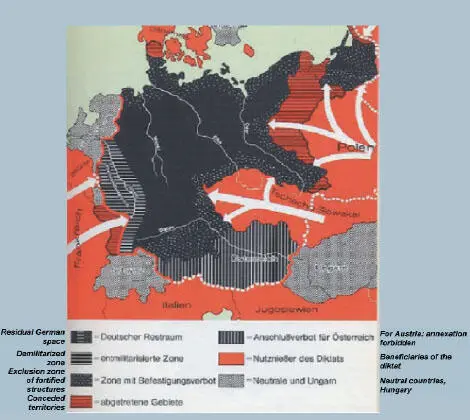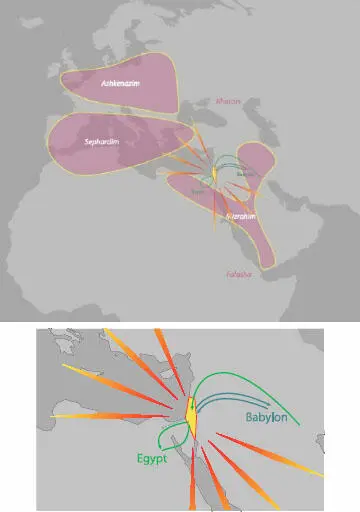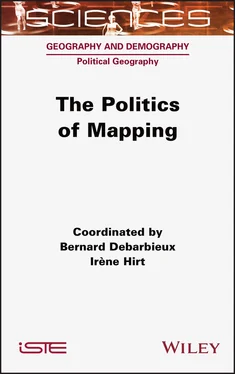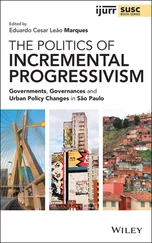1 ...8 9 10 12 13 14 ...17 Wood, D. (1992). The Power of Maps . Guilford Press, New York.
Wood, D., Fels, J., Krygier, J. (2010). Rethinking the Power of Maps . Guilford Press, New York.
Woodward, D. and Lewis, G.M. (1998). Introduction. In The History of Cartography , Woodward, D. and Lewis, G.M. (eds). The University of Chicago Press, Chicago, London.
1 1 The difference of meaning between mapping and cartography is not stabilized even among specialists of the field. In this introduction, in accordance with the title of this book, we focus on mapping broadly defined as the way of thinking, seeing and acting by using maps; comparatively, cartography points more specifically at “the art, science and technology of map-making” which emerged as a scientific discipline in the late 19th century (Kent and Vujakovic, 2018, p. 1). However, some well-known phrases in the field have used the word “cartography” in a different way, such as “critical cartography” or “history of cartography”. In this case, we have kept the word cartography to respect the common use of authors and practitioners. For the sake of convenience, we will also use words derived from “cartography” (cartographer, cartographic production, etc.) interchangeably, i.e. both when referring to “cartography” and “mapping”.
2 2 Notably the exhibition The Power of Maps, created in 1993 at the Cooper-Hewitt, National Museum of Design, New York, and later hosted at the Smithsonian Institution, Washington.
3 3 In French, the translation and editing of Harley’s few texts were done by Peter Gould and Antoine Bailly (Harley 1995).
4 4 Monmonier’s most popular work (1991) was translated into many languages in the years 1990–2000.
5 5 Speier’s text has been commented on since the turn of the century, notably by Pickles (2004, pp. 44-45) and Herb (1997).
6 6 Palsky points to certain commentaries on the “Cassini map” which argue that it was intended to constitute a body of knowledge capable of reinforcing the centralization of France in the 18th century and its military power, whereas specialists of this production have shown how it was the result of contingent decisions, always thwarted in its realization (Palsky 2003, p. 212).
7 7 In French, the word “politique” encompasses the following three concepts of the English language: 1) Polity or “le politique”: the institutional dimension of politics; the institutions of the social world; 2) Politics or “la politique”: all the power relations of the social world, and not only those inherent in the institutions; 3) Policies: “politiques publiques” the set of laws and instruments which orientates the action of governments.
8 8 This projection is also known as the Gall-Peters projection, after the Scottish minister James Gall who invented it in the 19th century.
9 9 We have not been able to find the original text published in Spanish in García Torres’ manifesto Estructura (1936), where an early version of the map appears.
10 10 For an in-depth interpretation of this artistic map and the artist’s intentions (between a desire for decolonization and unassumed cultural mixing), see Rommens (2018).
1
The Map as a Legitimate Space: Cartography as a Language, a Stage and an Issue
Jacques LÉVY
Director, Spatial Intelligence Chair, Université Polytechnique Hauts-de-France, France
It has been found (Monmonier 2019 [1991]) that the map can be a site of lies. This is often the case in geopolitical propaganda, where states compete with untruths to transform what will be an aggression or a conquest into a defensive posture or a simple recovery of a lost territory. The Nazi map shown in Figure 1.1is a good example. It was served by the semiological qualities of German cartography at the time which, under the impulse of the Hitlerian cartographer-general Karl Haushofer (1869–1946) and the Zeitschrift für Geopolitik journal he founded in 1924, found new balances between data accuracy and communication simplicity.
The reader is easily led to believe that, by their very position, Czechoslovakia and Poland represented serious threats to the Reich. The point can be generalized by saying that, when community visions clash, with allegiance to the nation being one of the most productive in geographical statements, the clash of myths hinders any cognitive approach. Another myth, that of a truth intrinsic to the very idea of the map, collapses: as a language, no more and no less than other languages, the map can belong to different discursive registers, that of ideology as much as that of science.

Figure 1.1. Lying with the map (source: Der Reichsführer SS/SS-Hauptamt, “Der große Betrug von Versailles” in Der Reichsführer-SS, Der Weg zum Reich, Berlin: SS-Hauptamt, 1942, p. 105)
The use of maps for the purpose of deception does exist and is present in political fights. The question of the regimes of truth that can be identified in cartographic communication deserves to be explored in greater depth, and this will be the subject of the first part of this chapter. However, the relationship between cartography and politics cannot be limited to truth and lies. From this perspective, four other areas of interaction between maps and politics will be addressed: the enrichment of electoral cartography and the uses made of it in public debate; the dynamics of political cartography in relation to recent developments in the social sciences of space (“geographic turn”, “spatial turn”); the emergence of an ethical component in the work of the cartographer; and finally, the new ways of representing the relationship between science and citizenship.
As we shall see, these different questions come together in the recognition of the strong presence of the political issues of cartography and, consequently, in the attention paid to preserving and making the cognitive autonomy of cartographic work prosper, which is more essential than ever.
The two maps, as shown in Figures 1.2and 1.3, of Jewish history have been constructed in an attempt to understand the gap between the dominant view within Judaism and, to a large extent, outside of it, and that of scholars.

Figure 1.2. The mythical history of the Jews according to the dominant tradition (source: maps by E. Chavinier and J. Lévy in Lévy 2015)
In the first map (see Figure 1.2), we are talking about a population located in Palestine, which has been dispersed into many parts of Europe, North Africa and the Middle East, which makes the proposal that this population could rebuild a state in its place of origin through the creation of Israel coherent. In the second map (see Figure 1.3), constructed on the basis of the work by the historian Sand (2008), we discover that the Jews were much more numerous and, at many historical periods, more powerful, outside of Palestine – notably in the Roman Empire, in the Maghreb, in Yemen, in Ethiopia, on the shores of the Black Sea and then in northeastern Europe – than inside; the “Diaspora” never happened and most of the Jews before the Nazi extermination were much more likely to be natives than refugees, and the Palestinians of today are the main descendants of the Hebrews of Ancient Rome. The aim of the project was to make these different visions comparable through graphic semiology. However, these two maps are so divergent in all phases of their conception and realization that it would have been technically acrobatic and intellectually dangerous to make them visually comparable. Here, the map refrains from creating a common language, but instead highlights the incommunicability between two representations of space.
Читать дальше














